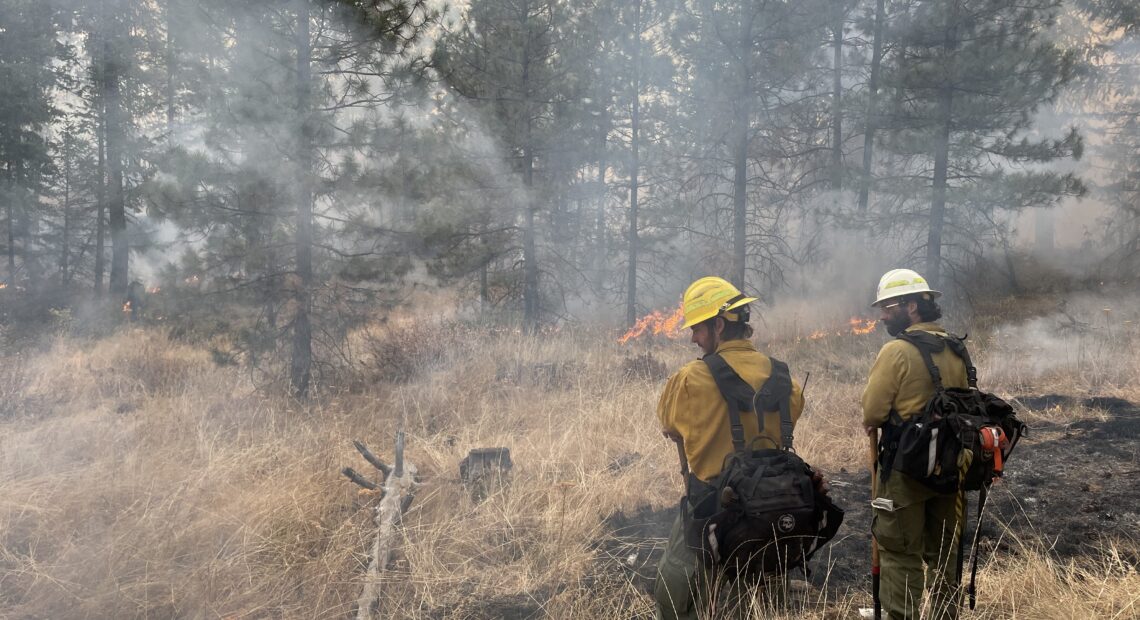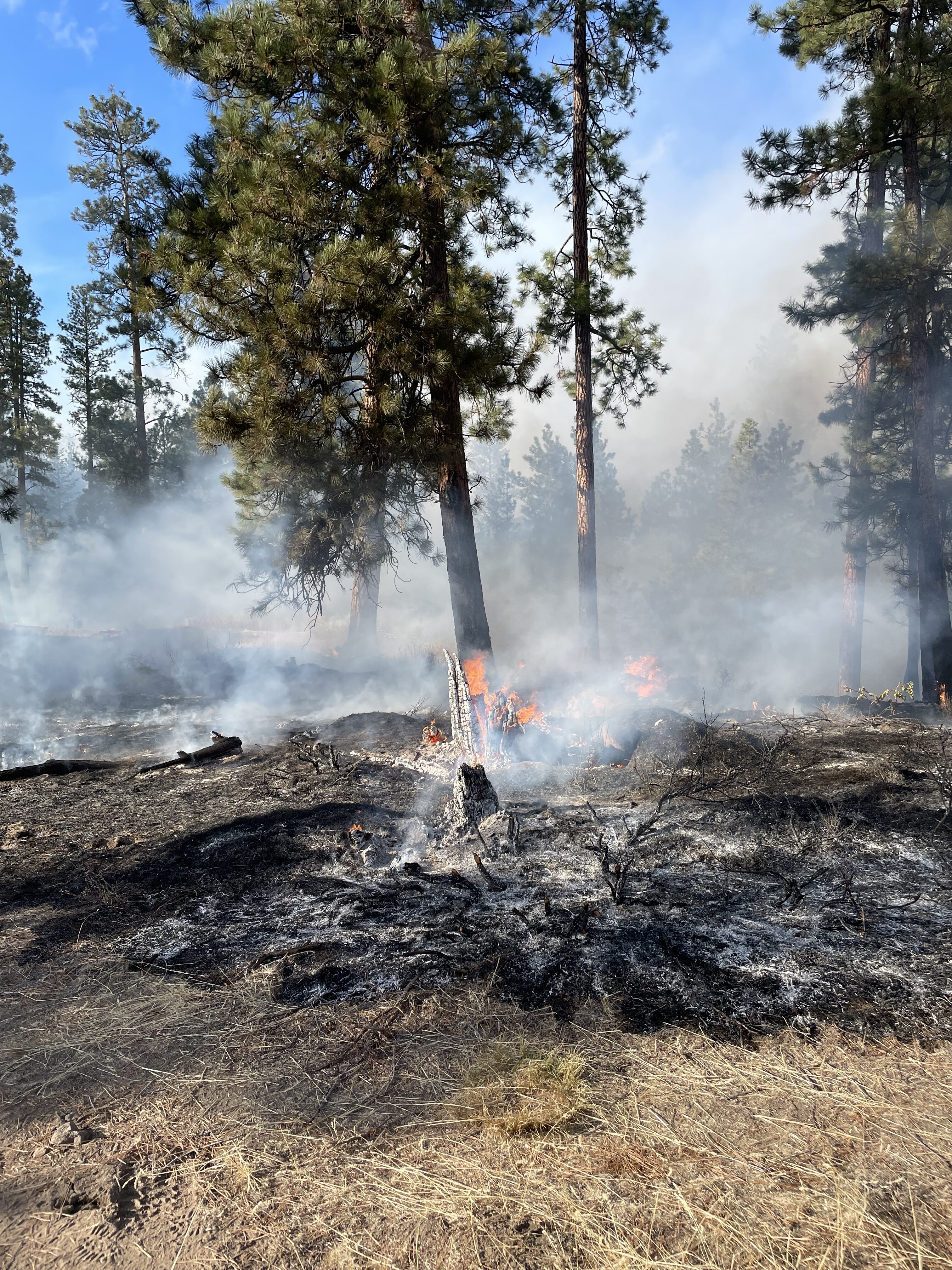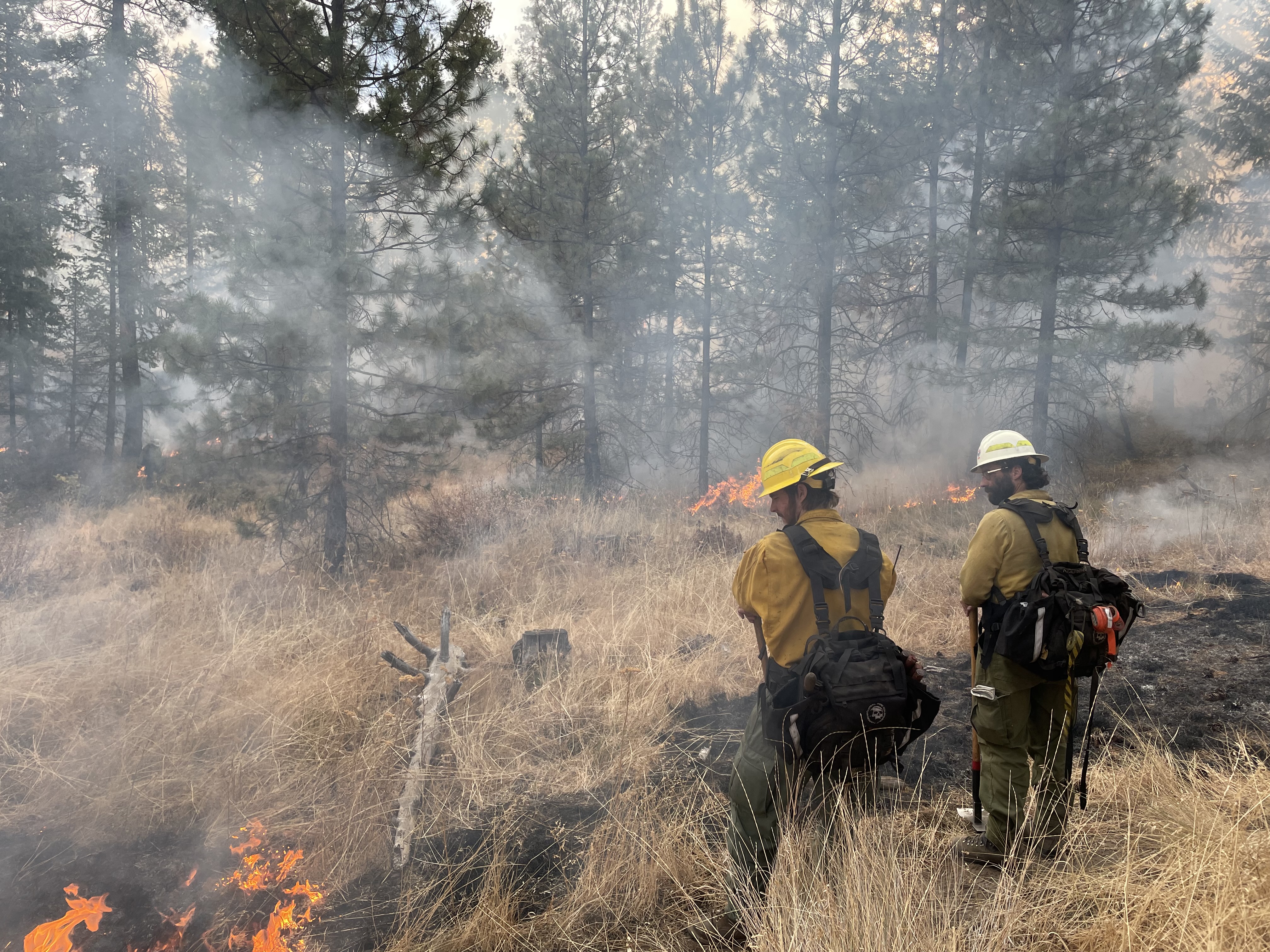
How controlled burns benefit fire-dependent ecosystems
Listen
(Runtime 5:08)
Read
By Lauren Gallup and Mary Ellen Pitney
For decades, the federal government declared all forest fires in the West a destructive force. Now, fire is viewed as a fundamental part of the western ecosystem.
A fire is burning through the grassy floodplain of the Pend Oreille River, a tributary of the Columbia River that stretches through the northern Washington, Idaho border. On October 13, 2022, smoke hangs over this usually pristine river valley, obscuring the normally picturesque view of towering pines and craggy cliff faces over placid waters.
But today, that’s exactly how Ray Entz wants it.
“Fire history for the Kalispel Tribe is one that’s embedded deeply in our traditional, cultural knowledge,” said Entz. “It’s the one tool the tribe used from time immemorial to manage its landscape.”
Entz is the director of wildlife and terrestrial resources for the Kalispel Tribe’s Natural Resources Department. He is burning this area because the tribe uses fire to increase the health of the grasslands and help prevent bigger, out-of-control wildfires.
“And so this kind of action is necessary to reduce competing vegetation and built up dead vegetation over years,” said Entz. “So that we get good grass release the next year and we get good support for our native plant materials, for both habitat and for food.”
Fire stewardship has long been a practice by Indigenous peoples of the Northwest. But that changed when settlers viewed fire as destructive because it burned up valuable timber and range lands.
“It would burn landscapes in ways that people didn’t like it,” said Dennis Becker, a dean and professor of Natural Resource Policy at the University of Idaho.
“And really for the longest time, the goal was really to try to keep fire out of our landscapes,” said Becker. “What’s happened is those landscapes have become overgrown with mature forest, with mature vegetation that just keeps getting more and more dense. That creates the events that we have here today, which are just these explosive fire events that are out of control.”

A crew member holds a drip torch as the team burns a fire line during the Washington State Department of Natural Resources’ controlled burn near Naches, Wash. (Courtesy: DNR Communications)
Land managers are bringing fire back with controlled burns. Frequent controlled burns — where trained teams purposefully ignite lands — can not only reduce the risk of catastrophic fires, but also bring other benefits to the ecosystem. These burns are actively monitored for safety and to ensure the team is meeting different ecological goals.
The U.S. Department of Agriculture found that soil on burned landscapes contains up to three times more nutrients than land untouched by fire. And fire plays a key role in the life cycles of many western plant species.
Ponderosa pine, red stem ceanothus and huckleberry all depend on fire. Fire allows some plants to germinate because the heat releases their seeds from their waxy coating, and for others, it creates the soil chemistry they need to take root.

Fire can bring benefits to the ecosystem — soil on burned landscapes contains up to three times more nutrients than land untouched by fire. (Courtesy: DNR Communications)
But despite the benefits — any fire is still dangerous. And so safety matters with planned burns.
“You can’t just put fire back into the system prescribed fire or not, anywhere that you want, it’s not safe,” Becker said.
Trained teams create a burn plan to diagnose what the landscape needs and when they’ll be able to burn, considering weather conditions — because weather can either help contain a fire or blow it out of control.
The Confederated Tribes of the Colville Reservation are currently burning between five and six-thousand acres every year. Chairman Jarred-Michael Erickson says in the face of a changing climate, they need to ramp that up. With climate change, hotter and drier conditions create more arid landscapes, leading to longer and more destructive wildfire seasons.
Data from the EPA shows that while the number of individual wildfires has held steady for years, the size and destructive power of those burns has been trending upwards for decades.
“There’s still that big gap there that we need to fill to keep up with the amount of forest growth that’s happening,” said Erickson.
And Dennis Becker said wildfires are not going away — but they can be less damaging if the landscape is carefully managed, with controlled burns playing a key role.
“Quite honestly, fire has been here forever,” Becker said. “We tried to get rid of it. We tried to minimize it, that didn’t work. Now we’re understanding that we have to bring this back into our way of managing things.”
He said humans need to learn to live with fire as a natural and important part of the ecosystem.
This piece was created in collaboration with NOVA with major funding from the Corporation for Public Broadcasting. Watch the documentary, “Weathering the Future” on April 12 and 15 at 9pm on KTNW and KWSU-TV or through the NWPB Passport app. Join the conversation on social media by using the hashtag: #ClimateAcrossAmerica
















